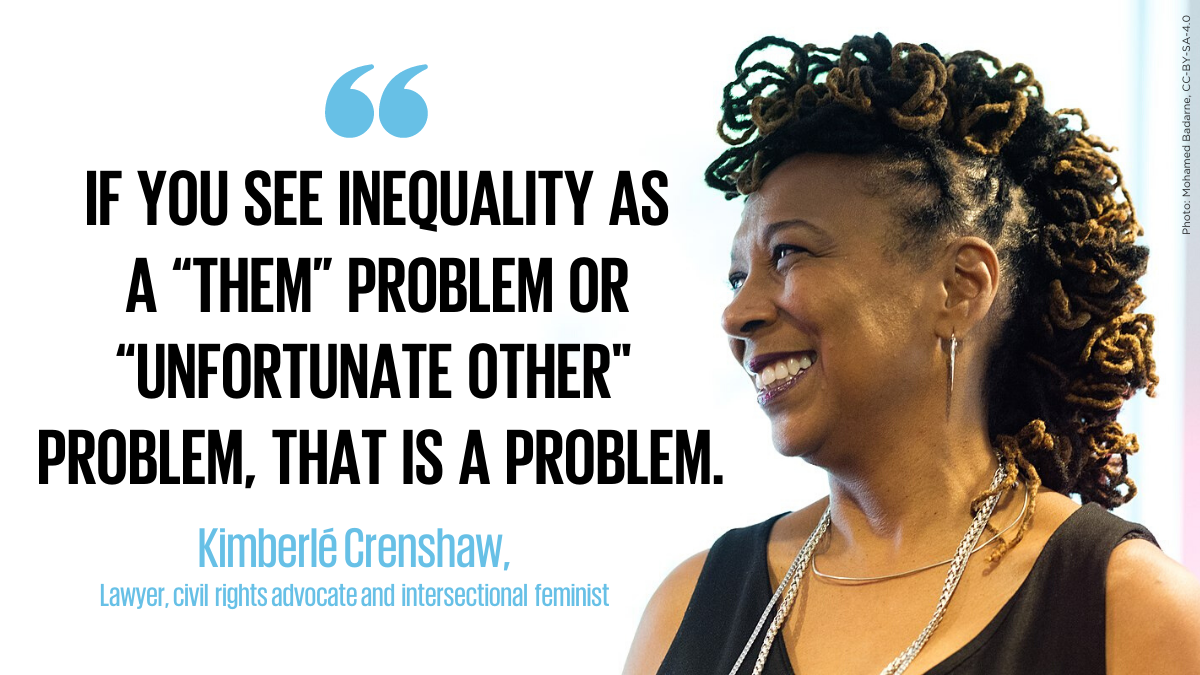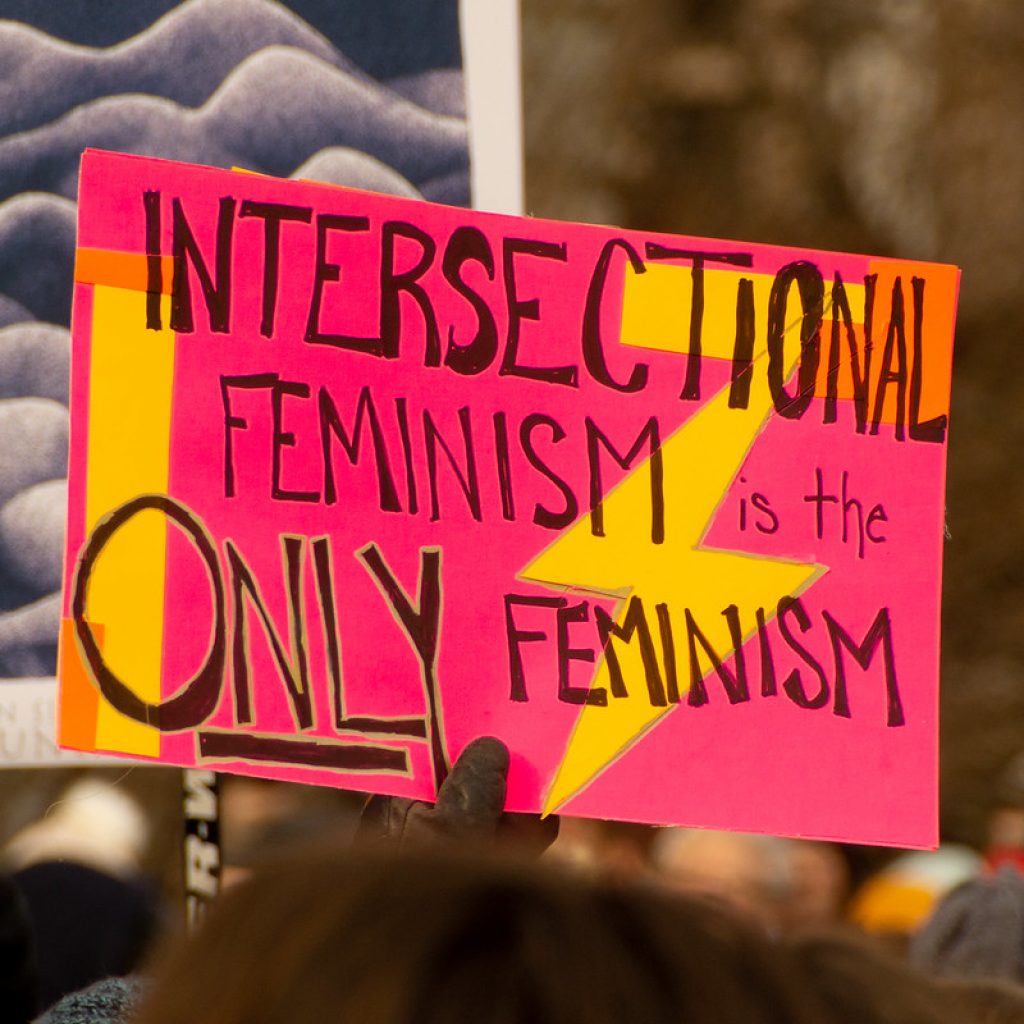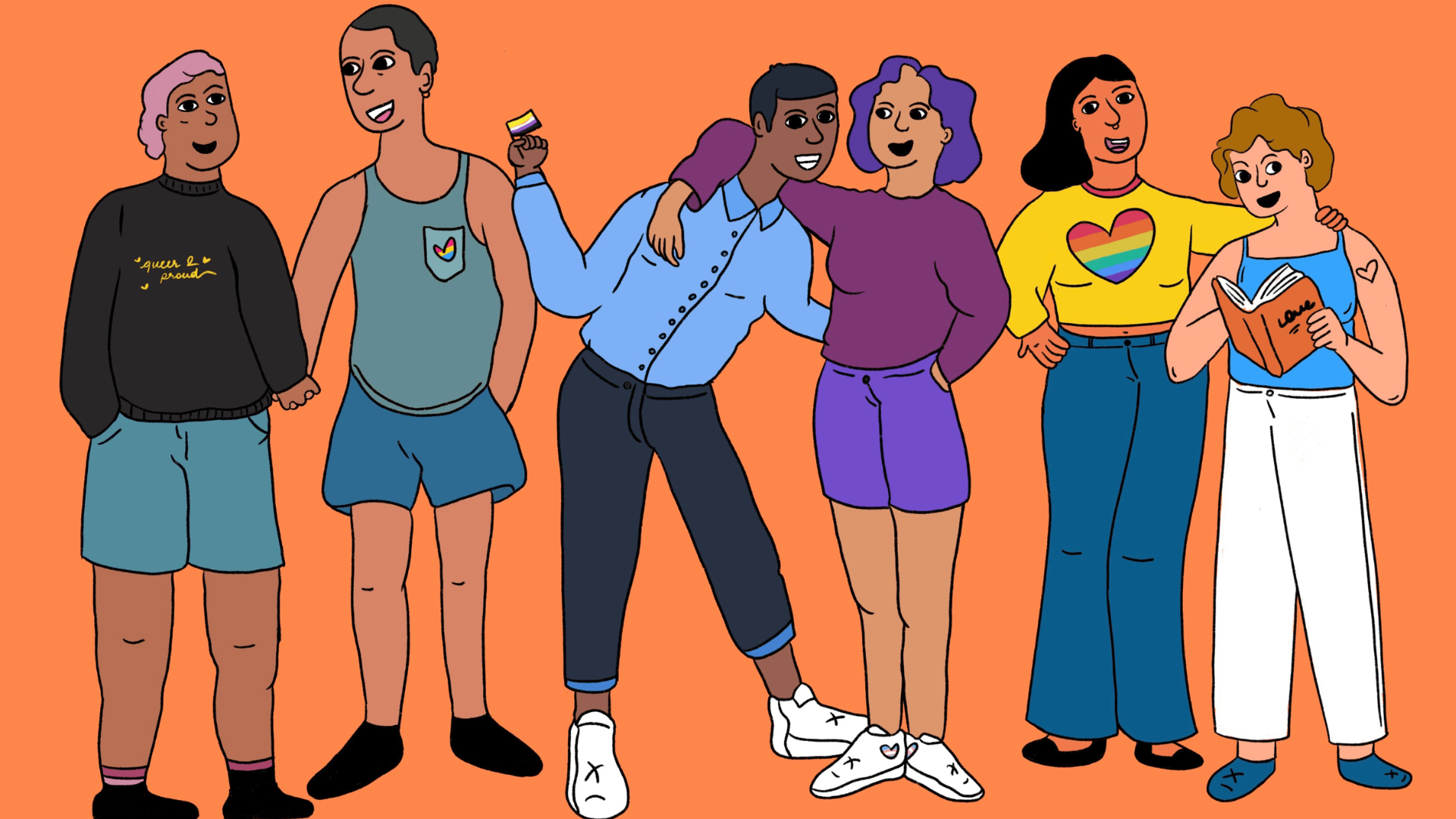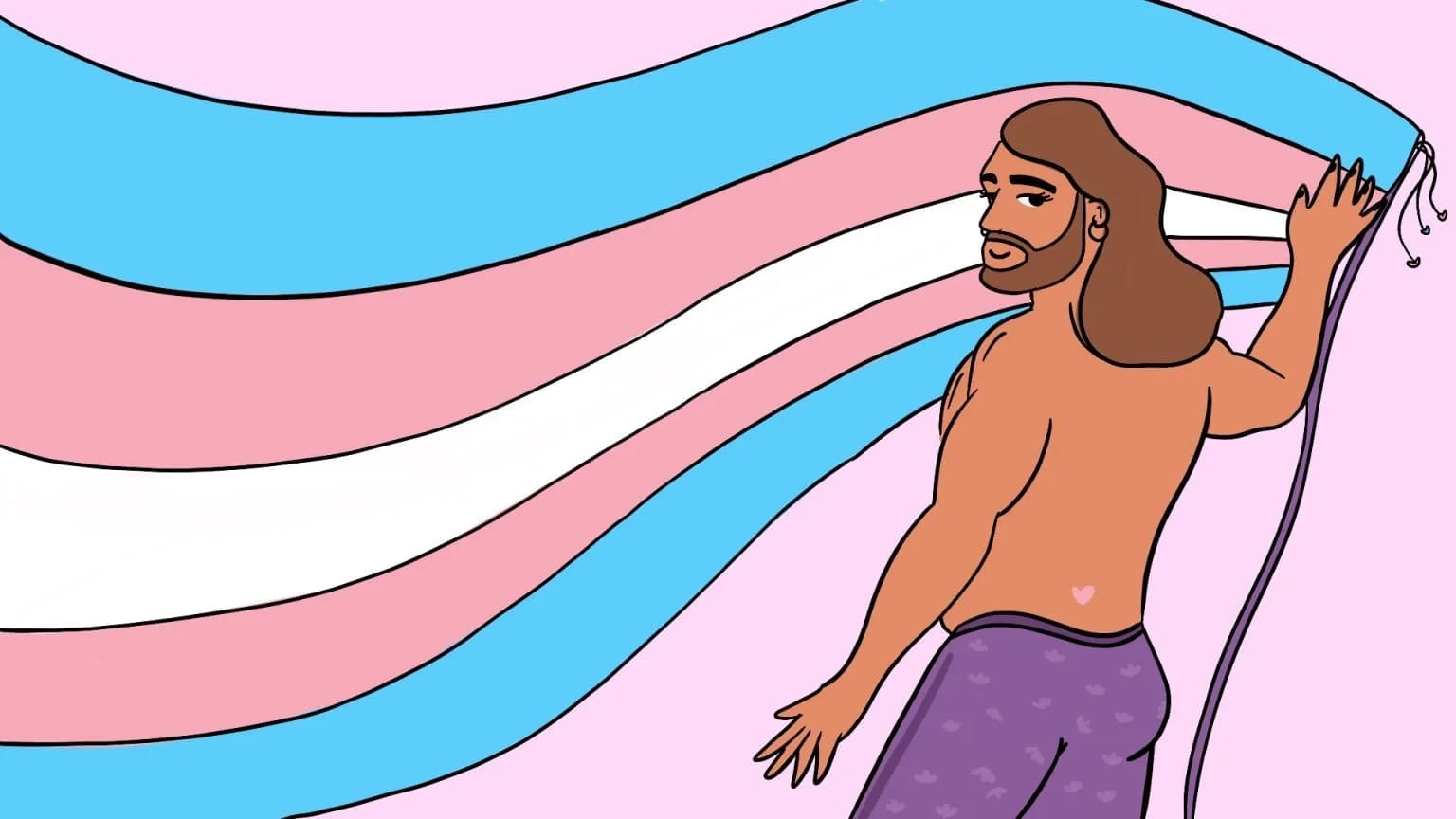Intersectionality is a framework for understanding different aspects of an individual’s social and political identities (such as gender, sexuality, caste, race, class, religion, disability, etc.) that combine to create unique ways of discrimination and privileges. The interjection of different roads reflects a particular aspect of an individual on which that individual is oppressed or rewarded. There can be single or multiple intersectionalities in a single individual based on which their life operates in society.
Kimberle Crenshaw, in 1989, coined the term intersectional feminist, which is “a prism for seeing how various forms of inequality often operate together and exacerbate each other.”
Looking at inequality, it doesn’t always happen in an equal and measured manner; social identities overlap and intermingle with each other creating experiences of different discriminations and privileges, making the degree of inequality different for everyone around. Intersectional feminism looks at the voices of those experiences that interject with other forms of oppression, further understanding the depth of inequality and the relationship among them.

Intersectionality is a framework for understanding different aspects of an individual’s social and political identities (such as gender, sexuality, caste, race, class, religion, disability, etc.) that combine to create unique ways of discrimination and privileges. The interjection of different roads reflects a particular aspect of an individual on which that individual is oppressed or rewarded. There can be single or multiple intersectionalities in a single individual based on which their life operates in society.
I found the picture quite problematic while navigating and analysing the content going around in the digital world through an intersectional feminist lens. Almost all the content in and around digital media has a sexist approach. Starting from hypersexualisation and objectification to the ideal beauty standards, every aspect had a very prejudiced and stereotyped system. The hypersexualised and objectified picture of the women painted on the canvas of digital media through songs, movies, memes etc., portrayed nothing other than how women are treated not as humans but as mere objects of pleasure.
Similarly, with the ideal beauty standard approach, the heroines of the movies or daily soaps are seen to be fair, slim, and mostly straight women, ignoring the presence of women of any different form. In contrast, the women of darker complexions with other body types are seen in the role of domestic help and other side characters; this pictures the underlying prejudices we have against other races and body types.
It also shows how the digital media links the idea of darker complexion to the lower class of the society, discriminating and oppressing them for the same. Also, men applying makeup and showing characteristics other than well-defined and generalised masculinity are shown in a very effeminate light. In the popular media, the image of the women, the picture of a standardised female, has been drawn, pulling all the women into the pool of similar features, traits and emotions, ignoring the reality of the situation.
I found the picture quite problematic while navigating and analysing the content going around in the digital world through an intersectional feminist lens. Almost all the content in and around digital media has a sexist approach. Starting from hypersexualisation and objectification to the ideal beauty standards, every aspect had a very prejudiced and stereotyped system. The hypersexualised and objectified picture of the women painted on the canvas of digital media through songs, movies, memes etc., portrayed nothing other than how women are treated not as humans but as mere objects of pleasure.
Even though media sometimes tries to break through the taboos of menstruation, these cases are extremely rare, and in most cases, either menstruation is a silent topic which is avoided, or the images of the stereotyped notions are produced in front of the audience. Another famous child of the digital media is ‘meme’. No doubt, many memes make us laugh and engage us all through our social media, but some of the memes are extremely insulting and demeaning to the oppressed class of society.
Memes, furthermore, sometimes are seen to be based on very stringent norms of the society, such as gender roles, performativity and body politics, which directly or indirectly captivate us in the walls of the defined roles, for instance, memes making fun of men doing makeup, plus size models or even women with bodily hair.

While watching movies and daily soaps, I could not ignore how striking the difference was between the characters playing different classes of society. The lower classes are seen to be devalued, discriminated and dressed in a particular traditional way, whereas the upper class is seen to be extremely rich, influential and dressed in either extremely heavy pieces of jewellery and traditional clothes or in western attire and the middle class were surprisingly nowhere in the picture, portraying nothing about their side of society.
Similarly, with the ideal beauty standard approach, the heroines of the movies or daily soaps are seen to be fair, slim, and mostly straight women, ignoring the presence of women of any different form. In contrast, the women of darker complexions with other body types are seen in the role of domestic help and other side characters; this pictures the underlying prejudices we have against other races and body types.
Theirs, most of the time, is the story of invisibilisation. The pictures of the digital media never really represent the actual image of poverty, already creating a barrier of difference between the classes. Differentiation and biasedness towards the majority religion and showing minorities as lower-class people is another feature that I saw in these shows, which painted the discrimination and ignorance we have as a society towards them.
While homosexuality, trans people and gender non-confirming people are almost completely ignored and devoid from every form of the digital picture and if shown are shown in a very negative and unrealistic manner, females are always seen to be placed lower as compared to the males, both the genders carrying out the traditional gender roles and performances. Pornography is another child of digital media, which portrays the image of discrimination and prejudices that plays between the genders. Sexual violence towards the females and the angle of the videography to please the male audience shows how biased our society is towards the male gender. The male gaze is an important character of digital media, making it visible in all forms of media.
Intersectional feminism matters today because it shows us the picture of the society along with the image that women are not only oppressed by the fact of patriarchy but also by different layers which are closely linked to patriarchy, such as racism, casteism, communalism and various other class-related issues. It further helps us to understand the relation between inequalities, hidden themes and symbols of oppression that may have been overlooked, giving us a deeper and a greater understanding.
When we look through these pictures of digital media, we fail to see the painting of reality, such as ignorance or misrepresentation of natural processes like menstruation, pictures of realities of sexual orientations and the transgenders, overdramatic portrayal of poverty etc. Also, sometimes we see these spaces giving wrong ideas about the barriers and stereotyping between the classes, religions and gender, such as the semiotics of fashion — the difference between the dress patterns of various classes, or judging and characterising genders based on their dresses and behaviour etc. which creates a sense of inequality and difference in the minds of the audience.
Hypersexualisation is making the environment extremely toxic, increasing the gap between how the genders see each other and perceive each other’s value.
In my opinion, the current form of digital media is mostly working towards increasing the privileges of the superior rather than bridging the inequality gap. Looking at all the ways our system has given birth to these inequalities, there is a need for a bridge to facilitate the walk from the state of oppression to the state of privileges. We as a society should not just fight for justice but rather work towards rooting out all forms of oppression.
“If you see inequality as a “them” problem or unfortunate other problem, that is a problem”, — says Crenshaw. Thus, if we look through an intersectional lens and see how different communities and people are fighting various interconnected issues together, we can perhaps change the picture of the society, painting the image of equality on the canvas of the globe.
Also read: What Are Gender Pronouns And Why Should We Use Them Accurately?
Majoring in Women’s Studies from Tata Institute of Social Sciences, Shradha has her background in English literature. She is a philomath who loves reading, writing, researching, advocating and analysing. Her interest areas revolve around Gender, Sexualities, Power, Violence, Intersectionality, Laws and Policies, SRHR, Mental Health and Culture Studies. She can be found on LinkedIn, Instagram and Facebook.
Featured image source: Shreya Tingal for Feminism In India





